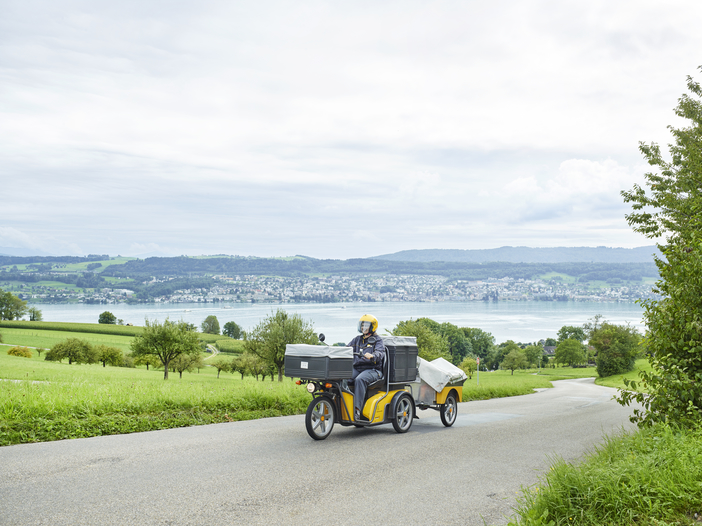Co-founder of Paazl, Bernard Schreiner, explores the possibility of delivery going fully carbon neutral and outlines five steps that companies should take to develop a greener delivery process
Imagine a world where your online orders took a week or more to arrive, were only delivered by bicycle, or left for you to collect from the store closest to you. Sounds crazy right? And yet, this is something we should give more thought to when it comes to sustainability in retail, and e-commerce in particular.
There are many articles out there talking about the environmental impact of online shopping. Covering everything from calculating CO2 emissions, to average speed of delivery and comparing different models of distribution, we know exactly what is putting pressure on the environment. And yet, we are still lacking practical tips to help us. Is it possible for delivery to go fully carbon neutral?
Delivery times shrink, and spending increases
While at first this may seem exciting for consumers and brands alike, this model puts a lot more pressure on the environment. The numbers are staggering: e-commerce now accounts for 14.3% of total retail sales, while according to research by Rakuten over the past two years, the time from purchase to delivery has declined from 5.2 days to 4.3 days.
It’s no secret that companies are trying to be as competitive as possible with delivery options to please online shoppers. After Amazon introduced their two-hour delivery option, retailers like Walmart hit back by announcing next-day delivery, or Target with same-day delivery for their customers.
In theory, online shopping is more sustainable, but in practice it isn’t so much. In order for it to be truly sustainable, we would have to predominantly shop online rather than in store, and wait for orders to arrive within a week – or even longer if coming from overseas.
In practice, we are still shopping in store, with those trips contributing to carbon emissions. We then ask for our parcels to be delivered almost instantly – again increasing carbon emissions, and afterwards we return items for free… you get the picture. Unfortunately, the ideal scenario of online shopping being the more environmentally friendly option is not yet a reality.
Steps to reduce your carbon emissions in the last-mile
If we wanted delivery to go fully carbon neutral, could we make it happen? At Paazl, we feel strongly about operating in a sustainable way and offering green delivery to customers. We thought about what it might take, and have listed our top-five suggestions below:
1. No more next-day delivery. We can imagine you already trembling with fear at this idea. The truth is, a lot of the difficulty around implementing sustainable options has to do with consumer education. People have become accustomed to instant gratification, without giving thought to the consequences. We’re not suggesting you change your delivery options overnight; start by educating your consumers on why they should choose slower delivery options on items that need to be shipped from afar. Offer them rewards for choosing green and slower delivery options, helping them understand why this is better for the environment.
2. Use only carbon neutral delivery options. For example, only delivering parcels on bicycles, or using electric vehicles. Or only using air transport for items when it’s necessary, favoring travel over land. This will help ensure that while you are delivering orders, you are not further contributing to greenhouse gas emissions. Sure, it might slightly increase the amount of time it takes for people to get their items, but if your logistics are well organized, you can still optimize routes and fully pack vans before they leave.
3. Offer set delivery times purely based on the most sustainable option. Sounds counter-intuitive? It sure is, but Dutch startup Picnic has successfully implemented such a model with its grocery delivery service. It offers free delivery, but groceries are only dropped off when their electric van is going through your neighborhood. Customers still have the convenience of getting their groceries on their doorstep, while Picnic can optimize delivery routes and be more sustainable.
4. Encourage people to use pickup points. Rather than delivering an item a second time, use carriers who offer a network of pickup points. If a person isn’t home, the parcel can still be dropped off and collected by them at a more convenient time. This prevents vans from having to drive around town a second time, taking indirect routes to and from people’s homes.
5. Ship from decentralized locations. When delivering in urban areas, consider shipping items from stores rather than from your warehouse. Doing so prevents you from flying items from overseas, or have them travel over land for a few days. It can even make for better use of your inventory, with items that don’t get sold in store. In some cases, you can also make good on your promise for quick delivery all while being sustainable, if you couple it with green options such as bicycles or electric vans.
Even if the idea of delivery being fully carbon neutral seems scary, we believe it’s easier to make it happen than you would think. Now we know the statistics and which parts of the process are the ‘worst offenders’, it’s a question of tackling them one by one.
We pose you the challenge: pick one of these five ideas and implement it fully, as your commitment to reducing carbon emissions!
Bernard Schreiner is the co-founder of Paazl, a fast-growing Dutch tech company that is set to make e-commerce delivery convenient. He has extensive experience in the e-commerce industry, including working behind the scenes in logistics in addition to a more hands-on approach as an online retailer. Now, he is on the management team, looking after the commercial side of Paazl.


